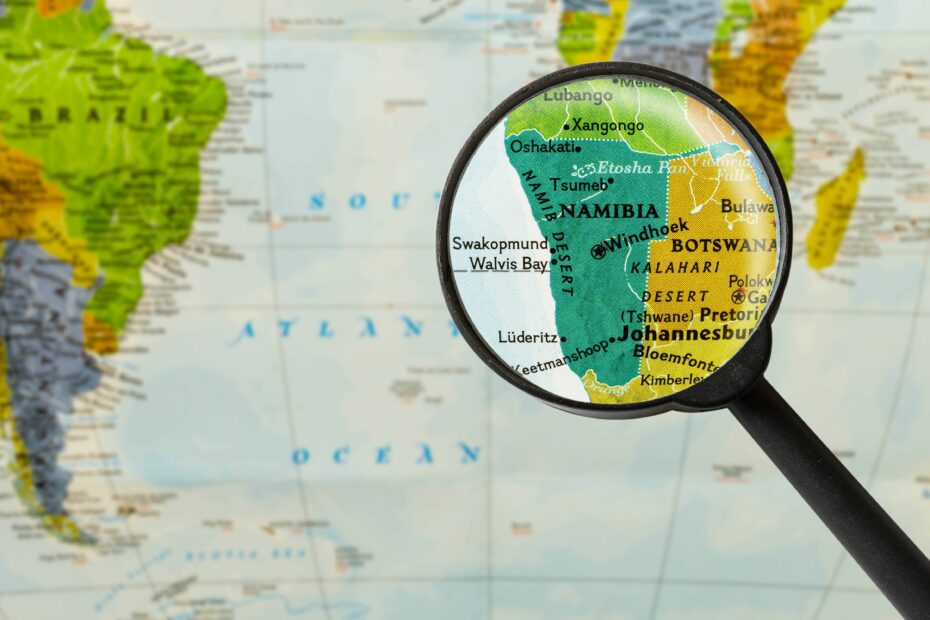Located in the southwest of Africa, Namibia is a country of differences. Arid deserts meet the active Atlantic Ocean, mixing traditional cultures with modern influences. Namibia’s captivating beauty has attracted explorers and adventurers for centuries. It offers untouched natural wonders and diverse roots of social traditions. However, one of the most interesting aspects of Namibia’s history is its ties to Germany. Let us dive into the different aspects of this nation.
Key Facts About Namibia
- Germany colonized Namibia in the late 19th century and remained under German rule until World War I.
- English is the official language, but many Namibians also speak German and indigenous languages such as Afrikaans and Oshiwambo.
- The currency used in Namibia is the Namibian dollar, which is pegged to the South African rand.
- The country’s economy relies heavily on mining, particularly diamonds and uranium.
Geography and Climate
Namibia’s landscape is one of the most diverse in the world. The striking red sands of the Kalahari Desert, adorned with camel-thorn trees, stand in stark contrast to the mesmerizing hues of the Fish River Canyon, one of the world’s largest canyons. And then there’s the Namib Desert, an expansive realm of endless beauty, where the towering dunes of Sossusvlei create a breathtaking spectacle. Read Also: Exploring the African Diversity: A Glimpse into Each Nation
But Namibia is not just about its deserts. It is a land of vast and varied landscapes. The country offers a rich heritage of natural wonders, from the harsh Namib Desert along the Atlantic coastline to the verdant woodlands of the Kavango and Caprivi regions. In the heart of it all lies the Central Plateau, with its majestic mountain ranges and sweeping savannah, serving as the economic and agricultural hub of the nation.
Namibia’s climate is as diverse as its topography, reflecting the country’s geographical variation. From the arid deserts to the lush woodlands, each region has its own unique climate, adding to the allure and charm of this extraordinary land.
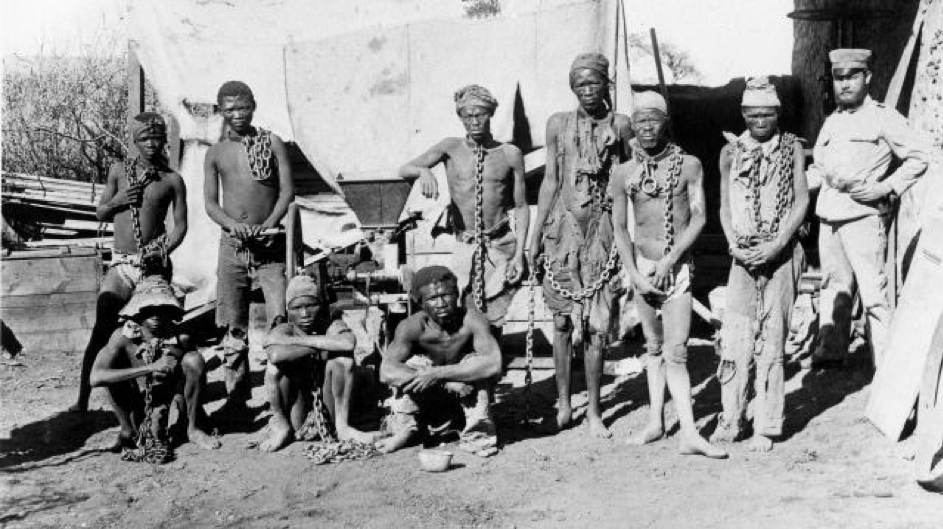
History of Namibia
Namibia’s history is steeped in a rich cultural heritage and touching historical events. Considered to be the earliest inhabitants, the San people, often referred to as Bushmen, have archaeological evidence dating back tens of thousands of years. Their rock carvings and paintings across Namibia are viewed as a link to their ancient culture.
In the late 19th century, Namibia became a German colony known as German South West Africa. Conflict and the tragic Herero and Nama genocide marked the colonial period, constituting one of the darkest chapters in Namibia’s history.
After World War I, South Africa administered Namibia under a League of Nations mandate. However, it sought to incorporate Namibia fully, leading to a protracted struggle for independence. The South West Africa People’s Organization (SWAPO) waged a guerrilla war against South African rule from bases in neighboring countries.
The United Nations intervened, and after decades of negotiations, Namibia finally gained independence on March 21, 1990. Since then, the nation has enjoyed relative stability and has made strides in establishing a democratic system, though challenges persist. Namibia’s history is a complex mix of triumphs and trials that have shaped the vibrant, resilient nation it is today.
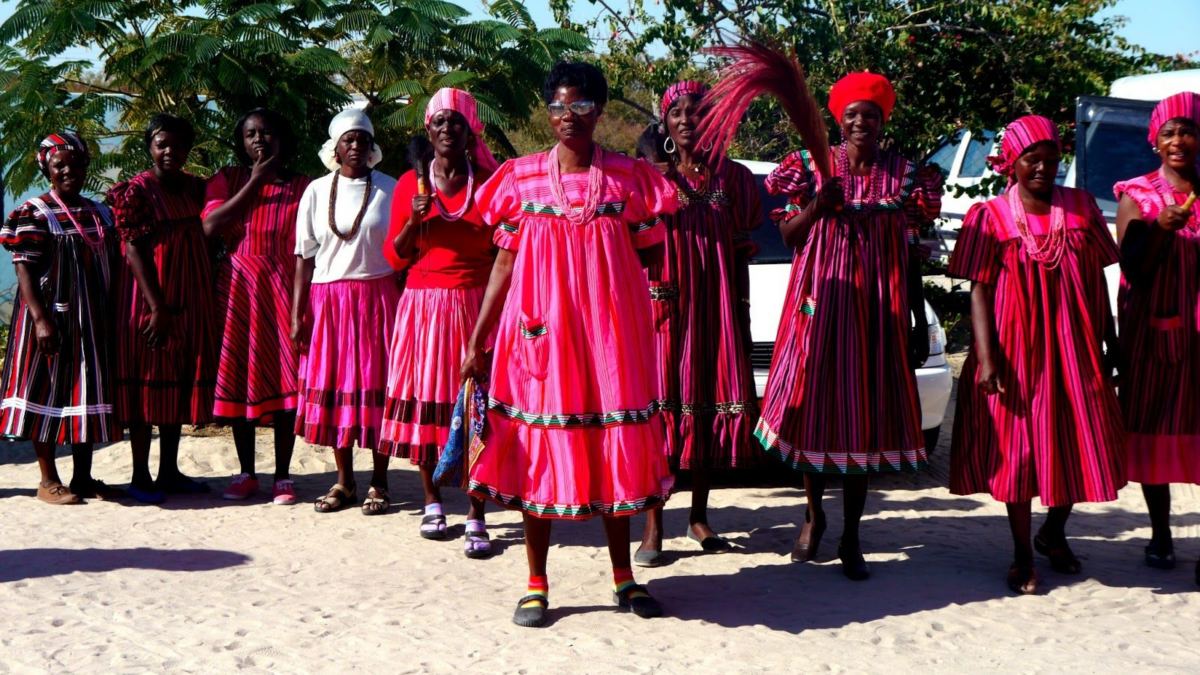
Culture and Traditions of Namibia
Namibian culture is made up of the diverse ethnic groups that make up its population, influenced by a variety of ethnic groups, each contributing their unique practices to the country’s rich traditions. The country is home to the Ovambo, Herero, Damara, Nama, San, Himba, and multiple other ethnic groups, each contributing unique elements to the cultural blend of Namibia.
Traditional clothing in Namibia greatly varies among different ethnic groups. The Herero tribe, for instance, dons a unique attire called ‘Ohorokova’ – a Victorian-style dress accompanied by a cow-horn-shaped hat. The Ovambo tribe, on the other hand, is distinguished by their long dresses, skirts, and puffy short sleeves made from a fabric known as ‘Odelela.’ The San people, primarily hunters and gatherers, traditionally wear animal skins and hides. Read Also: The Top 8 Smallest African Countries [With Pictures]
Namibian music and dance mirror the country’s diversity, offering various styles. Genres such as Mohiba, Omuhiva, and Ondjongo are widely celebrated. The Herero people are known for their unique style of music called ‘oviritje,’ while the Damara traditional music is recognized for its ‘Ma/gaisa’ and ‘Fura’ music. The San people have unique dance styles, further enriching Namibia’s cultural complexity.
Arts and Religion
Art and craft in Namibia is a thriving industry, and the Namibia Craft Centre, located in the heart of the city, epitomizes this. It offers a remarkable collection of handmade crafts, gifts, and curios, including intricately woven baskets, Makalani kernels, San ostrich eggshell jewelry, and vibrant embroidered linen. The Omba Gallery, housed within the Namibia Crafts Centre, showcases contemporary Namibian visual arts.
Religion in Namibia is predominantly Christian, with over 90 percent of the population identifying themselves as such. The small Himba and San ethnic groups actively practice indigenous religions. Atheists were also discovered to make up 0.02% of the country’s population in 2020. The state ensures the separation of religion and government, treating all residents equally, regardless of their religious beliefs. The Constitution guarantees freedom of religion, a right that the government generally respects.
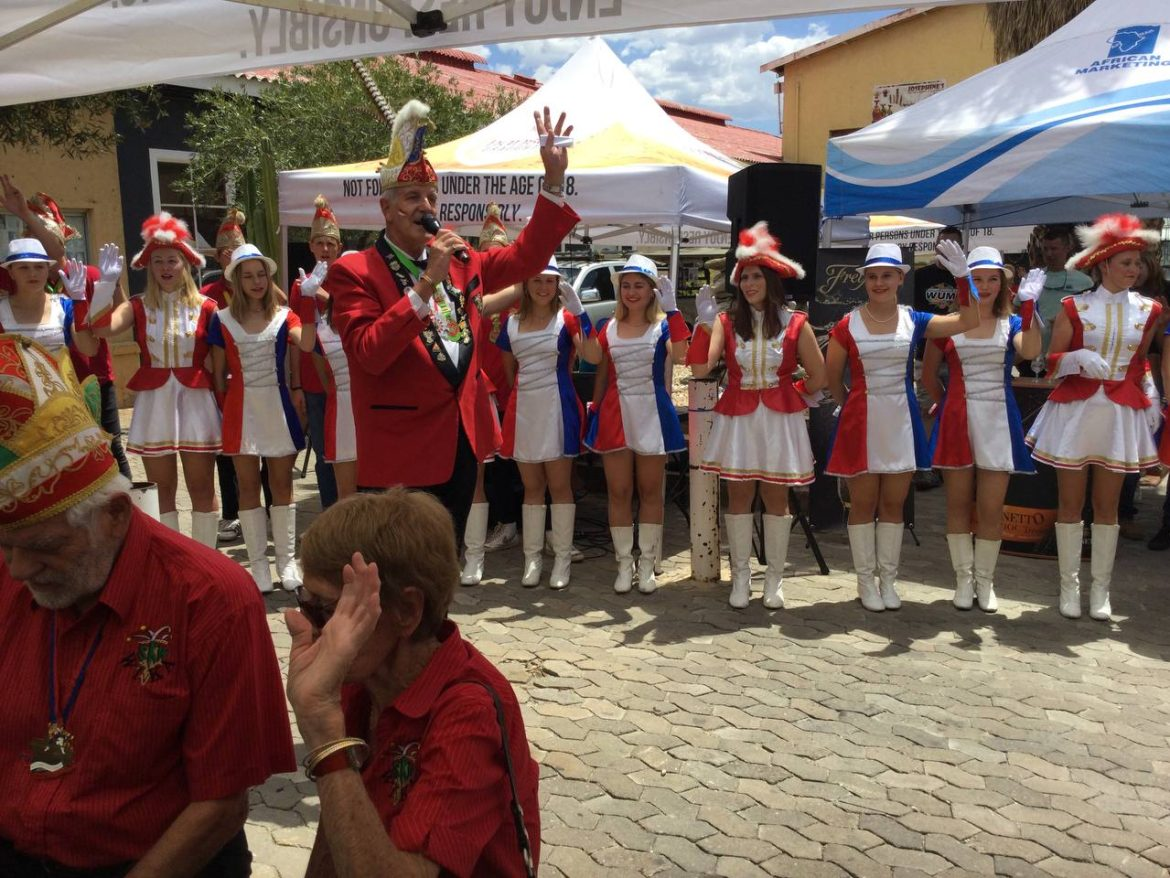
The German Community in Namibia
A significant part of Namibia’s cultural and demographic diversity is the strong German community that exists within its borders. Approximately 30,000 people of German descent still reside in Namibia, comprising nearly 5% of the total population. This community largely consists of descendants from the ethnic German colonists who settled in what is now known as Namibia during the colonial period.
The German influence is prominently visible throughout Namibia. Streets, buildings, and businesses adorned with German names serve as a constant reminder of the nation’s colonial history. The German language also continues to play a pivotal role in Namibia’s linguistic landscape. The Namibian Broadcasting Corporation, for example, operates a German-language radio station and broadcasts television news in German.
However, the legacy of German colonialism in Namibia has also left behind a complicated sentiment among the native Namibians. The feelings toward Germany and the German community within Namibia vary widely, with some expressing positive sentiments while others underscore the adverse impact of the German colonial past. This dichotomy highlights the complex relationship between the past and the present, serving as an essential part of the unique cultural heritage that makes up Namibia today.
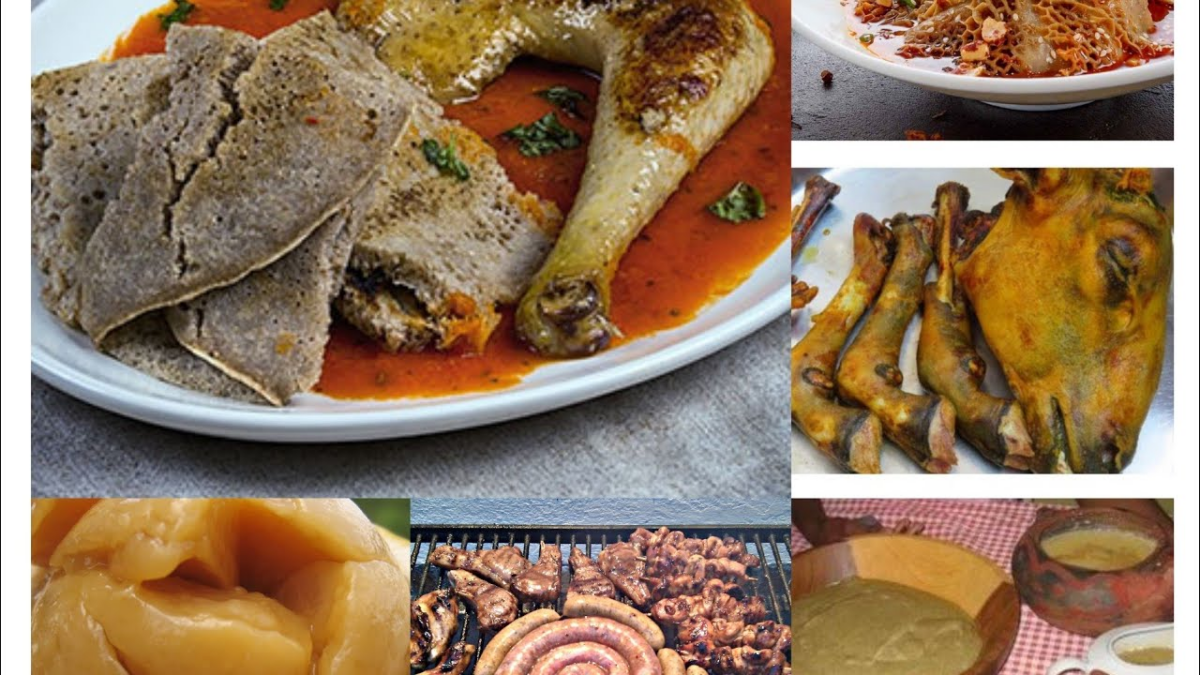
Food and Cuisine of Namibia
Namibian cuisine is a diverse blend of flavors, deeply influenced by both indigenous African tribes such as the Namas, Damara’s, and Ovambo, and colonial European cuisines from Germany, Holland, and England. This fusion of cultures results in a unique culinary landscape that centers around an extensive variety of meats and staple ingredients.
Meat, including venison, beef, ostrich, antelope, zebra, giraffe, oryx, kudu, lamb, and even game meat like springbok, plays a significant role in the diet. One popular dish is ‘kapana,’ a street food that grills seasoned meat, typically served with spicy tomatoes and onion salsa. People often enjoy these meats at ‘braais’ (barbecues), a social cooking tradition in Namibia.
Seafood, particularly oysters, is also incredibly popular in coastal areas, especially in the town of Swakopmund, known for its fresh oysters and crayfish.
A staple in most Namibian meals is maize, frequently cooked into a porridge known as ‘oshifima’ or ‘pap,’ similar to polenta prepared using corn flour. Other traditional dishes include meat skewers and biltong (dried meat).
The German influence on Namibian cuisine is evident in dishes like ‘brötchen’ (German bread rolls) and German-style sausages. Namibia’s brewing industry, influenced by German brewing traditions, produces several locally made beers, with ‘Tafel’ and ‘Windhoek’ being the most popular brands. Traditional non-alcoholic beverages like ‘oshikundu’ (a drink made from fermented millet) and ‘ombike’ (a fruit-based liquor) also hold a special place in Namibian cuisine.
Desserts often incorporate fruits like melons, with ‘boeretroos’ (a traditional doughnut) being a popular sweet treat.
Namibia also celebrates its culinary heritage through traditional events with ancestral origins, such as the Oshituthi Shomagongo celebration and the Let’s Eat Kapana Food Festival, dedicated to the beloved dish kapana.
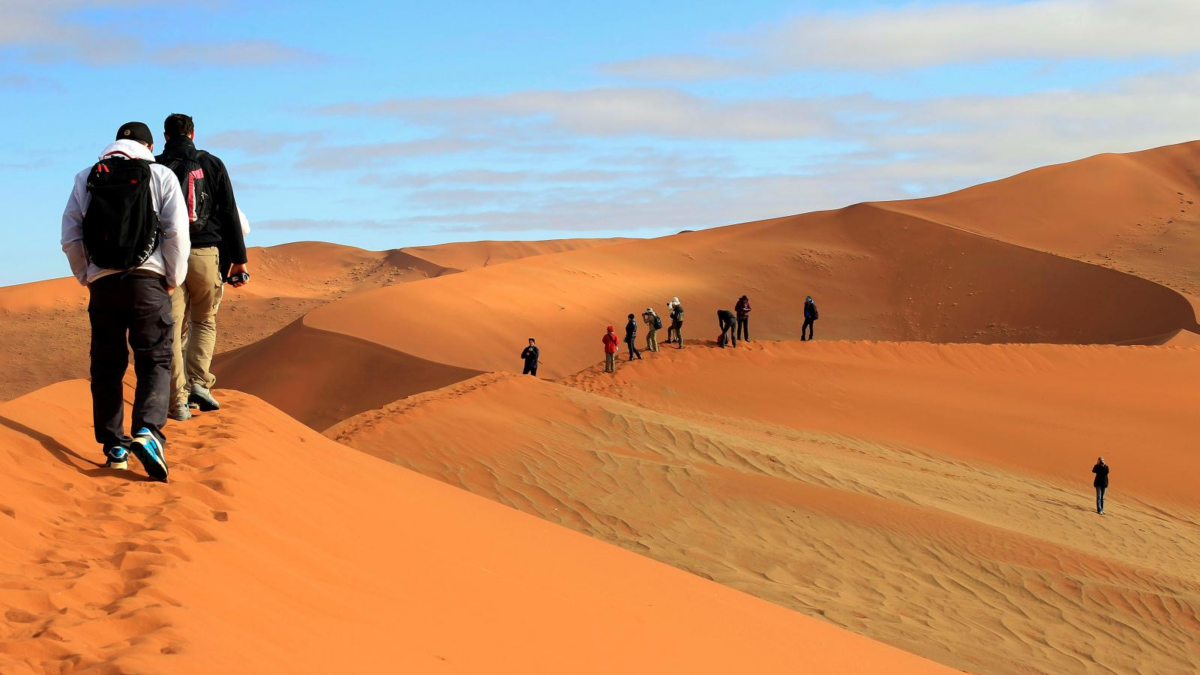
Tourism in Namibia
Namibia, a beacon of biodiversity, is a celebrated tourist destination renowned for its exotic wildlife, breathtaking landscapes, and rich cultural heritage. It is home to a plethora of endemic species, including desert-adapted elephants, black rhinos, and cheetahs. Its breathtaking landscapes include the Namib Desert, recognized as the oldest desert in the world, and the Fish River Canyon, one of the largest canyons globally.
The Etosha National Park, home to numerous African wildlife species, offers unparalleled safari experiences. Namibia’s coastal towns, such as Swakopmund and Luderitz, blend German colonial architecture with a delightful seaside atmosphere, offering an array of water sports and seafood delicacies. The capital, Windhoek, serves as a center of culture, with colonial-era buildings co-existing with modern architecture, bustling markets, and exquisite restaurants.
The cultural diversity in Namibia is truly captivating, with a blend of ethnicities such as the San, Herero, Himba, Oshiwambo, Nama, and Damara. Cultural tours offer travelers an immersive experience of these vibrant communities’ unique practices and customs.
For adventure seekers, Namibia presents a myriad of thrilling activities. From sandboarding in the vast dunes to skydiving over the arid landscapes, quad biking, mountain biking, hiking, and camping under the starlit African skies, there is no shortage of exciting experiences.
The country’s commitment to conservation and sustainable tourism, having the largest free-roaming cheetah population in the world, and being the first African country to incorporate environmental protection into its constitution further enhances its appeal to ecologically conscious travelers. The warm hospitality of the Namibian people ensures a welcoming and memorable experience for every visitor.

Economic Landscape
A modern market sector and a traditional subsistence sector characterize Namibia’s economic landscape. The country is rich in mineral resources, including diamonds and uranium, and has a small population of about 2.53 million. Despite its resource wealth and political stability, Namibia faces challenges such as high socioeconomic inequalities, structural constraints to growth, and an elevated debt-to-GDP ratio.
Namibia’s economic outlook is also influenced by climate change issues, fiscal deficits, and external reliance on commodity exports and the Southern African Customs Union (SACU). Higher diamond and tourism earnings and lifting COVID-19-related restrictions seem to support the country’s economic growth. Namibia has made progress in reducing poverty since its independence in 1990, but deep underlying challenges persist, undermining the prospects for further advancement.
A narrow industrial base and heavy dependence on the production and export of primary goods also characterize the economy. Namibia remains a net importer of basic food crops, but the government is taking steps to address this dependency through initiatives like the Green Scheme Programme and public-private partnerships in agriculture.

